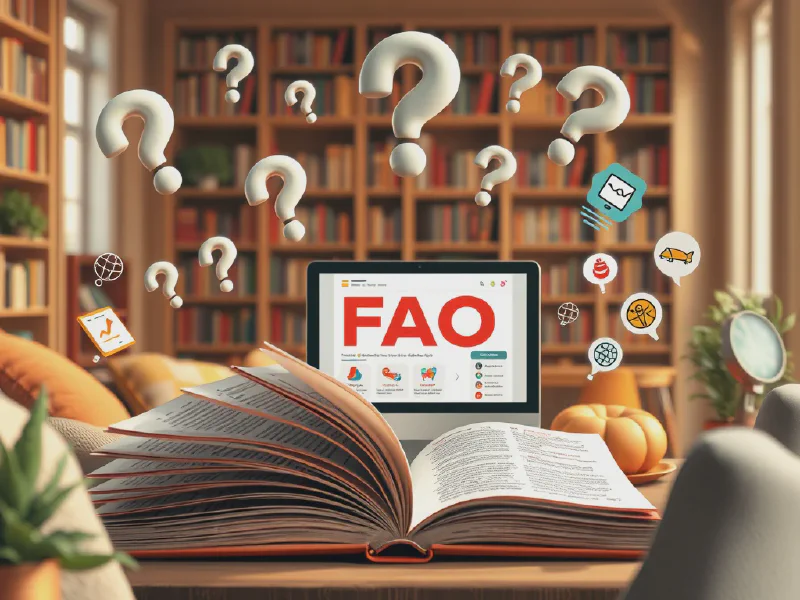Comprehensive FAQ Guide: Your Questions Answered

Understanding FAQ: A Comprehensive Guide
FAQ, or Frequently Asked Questions, serves as a vital tool for businesses and organizations to address common inquiries from customers. By providing clear and accessible answers to typical questions, FAQ sections enhance user experience and streamline communication.
Implementing an effective FAQ can significantly reduce repetitive queries directed at customer support. It empowers users to find solutions independently, thus saving time and resources for both customers and support teams. Furthermore, an organized FAQ can improve a company's website SEO ranking by using relevant keywords that potential customers may search for.
A well-structured FAQ page not only provides essential information but also builds credibility and trust with users. When customers find transparent answers regarding products, policies, or services, they are more likely to engage positively with the brand. Thus, an FAQ is not just an information tool but a means of enhancing brand loyalty.
Creating an effective FAQ requires a strategic approach, starting with researching common questions that users might have. This ensures the FAQ addresses real concerns, providing valuable information that resonates with the audience. The organization of FAQs should be done logically to promote ease of navigation, allowing users to find answers quickly.
In summary, FAQ sections are an indispensable asset for both customers and businesses. They optimize the user experience, reduce workload for support, and enhance search visibility, ultimately cultivating a loyal customer base.
Benefits of Implementing an FAQ
One of the primary benefits of implementing an FAQ is its ability to improve customer satisfaction. By providing quick answers to common questions, customers can find the information they need without having to contact support teams, increasing their overall satisfaction with the service.
Additionally, FAQ sections can significantly reduce the workload on customer support teams. With well-organized answers readily available, support representatives can focus on more complex inquiries while customers handle simpler questions independently.
An FAQ plays a crucial role in enhancing website SEO with rich keyword content. By incorporating terms that users commonly search for, businesses can attract more traffic to their sites, making it easier for potential customers to discover their services or products.
Moreover, FAQs foster trust with transparent information. When users can find clear answers about a company's policies, product specifications, or other services, they are more likely to view the brand as reliable and professional, ultimately influencing their purchasing decisions.
How to Create an Effective FAQ
Creating an effective FAQ begins with identifying common customer questions through surveys, customer feedback, and analysis of support requests. This step ensures that the FAQ is relevant and useful to the target audience.
Structuring FAQs for easy navigation is equally important. Grouping similar questions together or categorizing them by themes allows users to find answers more quickly and enhances the overall user experience.
Using clear and concise language in the FAQs will ensure that information is easily understandable. Avoiding jargon and technical terms helps customers navigate the content without confusion, which is critical for maintaining engagement.
Regularly updating the FAQ with new information or common inquiries will keep it relevant. Businesses need to stay proactive in tweaking and expanding FAQs to reflect product changes or new customer concerns that may arise.
Types of FAQs
Product FAQs specifically address questions related to specific items, such as features, usage, compatibility, and availability. These are vital for informing potential buyers about the products being offered.
General FAQs cover company policies, including shipping, returns, and exchanges. These provide essential information that helps customers understand their rights and the brand's policies.
Technical FAQs are crucial for troubleshooting issues related to software or hardware. Providing solutions to technical problems can enhance customer satisfaction and reduce frustration when issues arise.
Billing FAQs are designed to explain payment processes, subscription terms, and invoicing details, which are important for ensuring customers understand the financial aspects of their transactions.
Best Practices for FAQ Design
Using a search bar within the FAQ allows for quick access to specific questions. This feature significantly enhances user experience by enabling immediate navigation to relevant content without scrolling through long lists of queries.
Organizing questions by category can help users quickly find the information they're looking for. Categories can be based on themes or urgency, making it easier for users to navigate complex information.
Incorporating multimedia elements, such as videos or infographics, can make the FAQ more engaging and informative. Visual aids can clarify complex answers and provide an alternative means of understanding the content.
Ensuring mobile responsiveness is essential for accessibility. With the increase in mobile users, the FAQ design should be optimized for all devices to guarantee that every customer can access the information they need, wherever they are.
FAQ in Different Industries
In the e-commerce industry, FAQs often address customer concerns about shipping, returns, and payment processes. These answers help build confidence in online shopping experiences.
In healthcare, FAQs address patient concerns, covering topics such as appointment scheduling, insurance, and medical inquiries. This can significantly reduce anxiety for patients seeking information about their health.
In technology, FAQs provide troubleshooting advice for software and hardware. This helps users solve problems independently, enhancing their overall product experience.
Lastly, in the travel industry, FAQs can assist customers with booking processes, cancellation policies, and destination information, ensuring travelers have the necessary details for smooth planning.